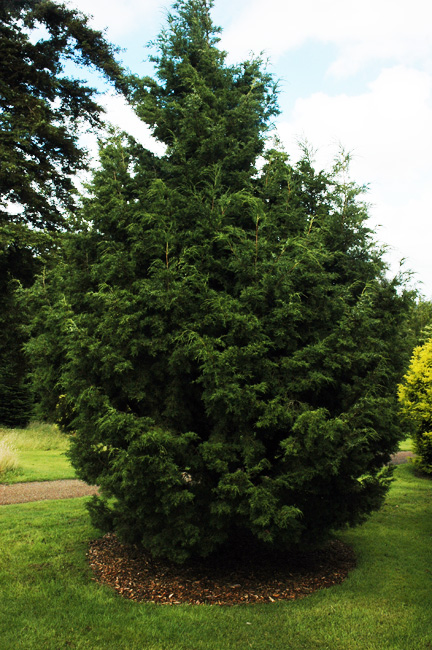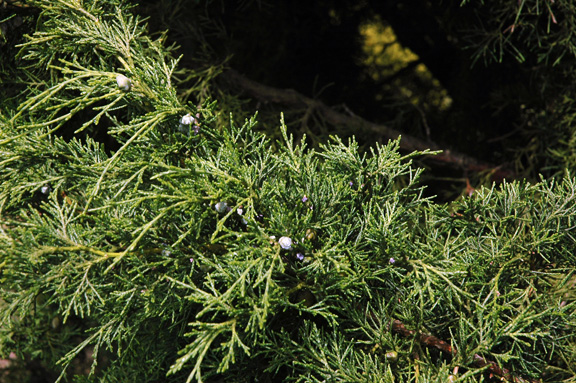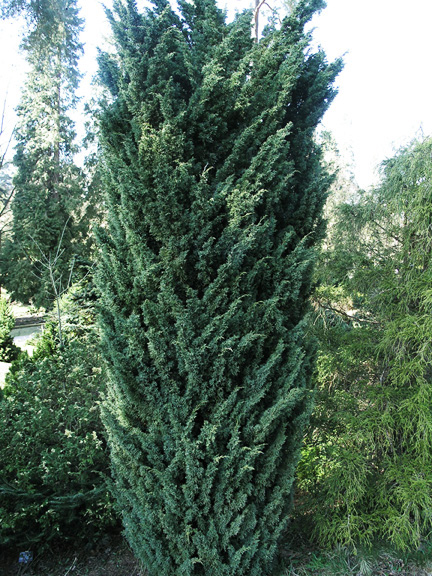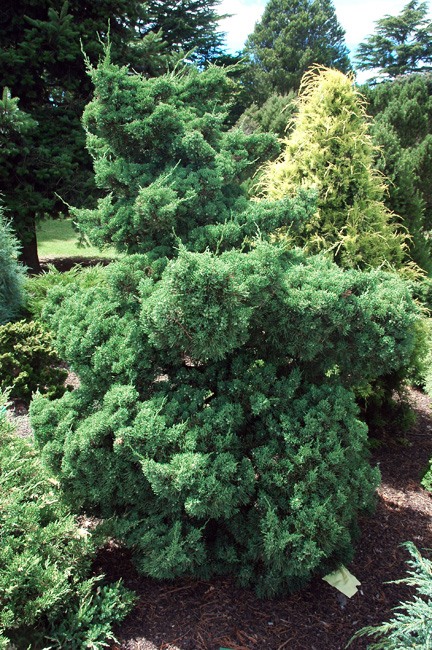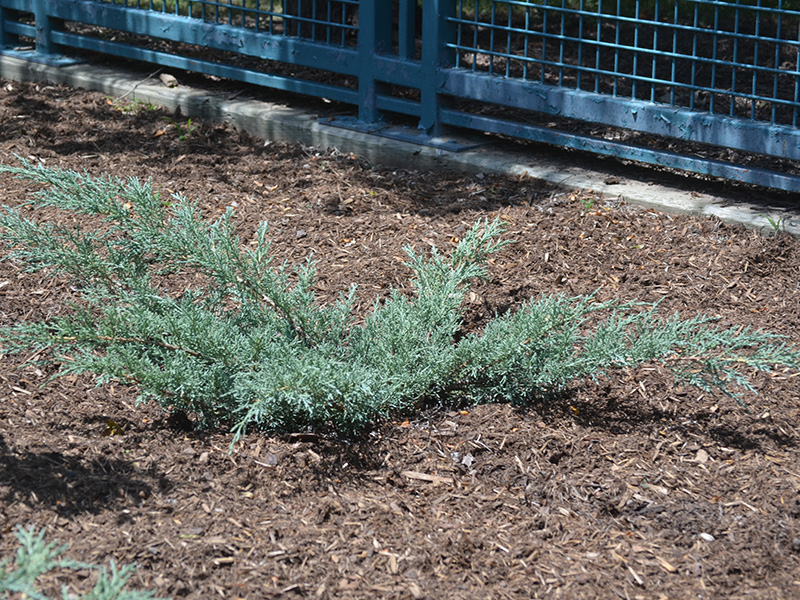| General Description | Tree or shrub; small round blue berry-like cones; two types of foliage (awl and scale-like) that are green to blue-green to grey-green. |
| ID Characteristic | Small pale blue bloomy berry-like cones; blue-green to greyish green coloured. Awl and scale like foliage; yellow to orange-brown flowers in March. |
| Shape | Tree or shrub; commonly erect, narrow conical but often spreading. |
| Landscape | Used as a ground cover, hedge, screen, massing, or specimen depending on the cultivar. |
| Propagation | Cultivars of Juniperus chinensis are propagated by cuttings. The species may also be propagated from late winter cuttings taken from new growth 5 – 10 cm long. Seed requires a 3 month cold stratification at 5°C. |
| Cultivation | Easily transplanted; once established there is little maintenance required; tolerant of urban pollution. |
| Pests | Phomopsis and Kabatina blight which causes stem die-back; problems are more cultivar specific; relatively trouble-free juniper. |
| Notable Specimens | University of British Columbia Botanical Garden, Vancouver, British Columbia. |
| Habitat | Found along the shorelines of Northern China and Japan. |
| Bark/Stem Description | Grey-brown; ridges and furrows on mature bark; peels off in thin strips, red-brown patches may be present where bark peels. |
| Flower/Leaf Bud Description | Wedge shaped, needle-like sharp points; 1 cm long; in sets of two or three; arranged in whorls of three or opposite in pairs. |
| Leaf Description | Green to blue-green to grey-green; has two types of foliage, adult foliage is scale-like in opposite pairs with bluntly pointed ends; juvenile foliage is awl-shaped or short needle-like to 1 cm long. |
| Flower Description | Flowers are yellow to orange-brown, shedding pollen in March; normally specimens have both male and female flowers, but with no ornamental value. |
| Fruit Description | Cones are globose; 5 mm–1 cm across; start out as pale blue then ripens to a dark brown; seeds are oblong and glossy brown. |
| Colour Description | Leaf colour is blue-green to grey-green, there is no autumn coloured foliage. Flowers are yellow to orange-brown in March; the fruit is white-blue and bloomy at first, then ripens to a dark brown. |
| Texture Description | The foliage is a fine and delicate texture; rough bark; smooth berry-like fruit. |
